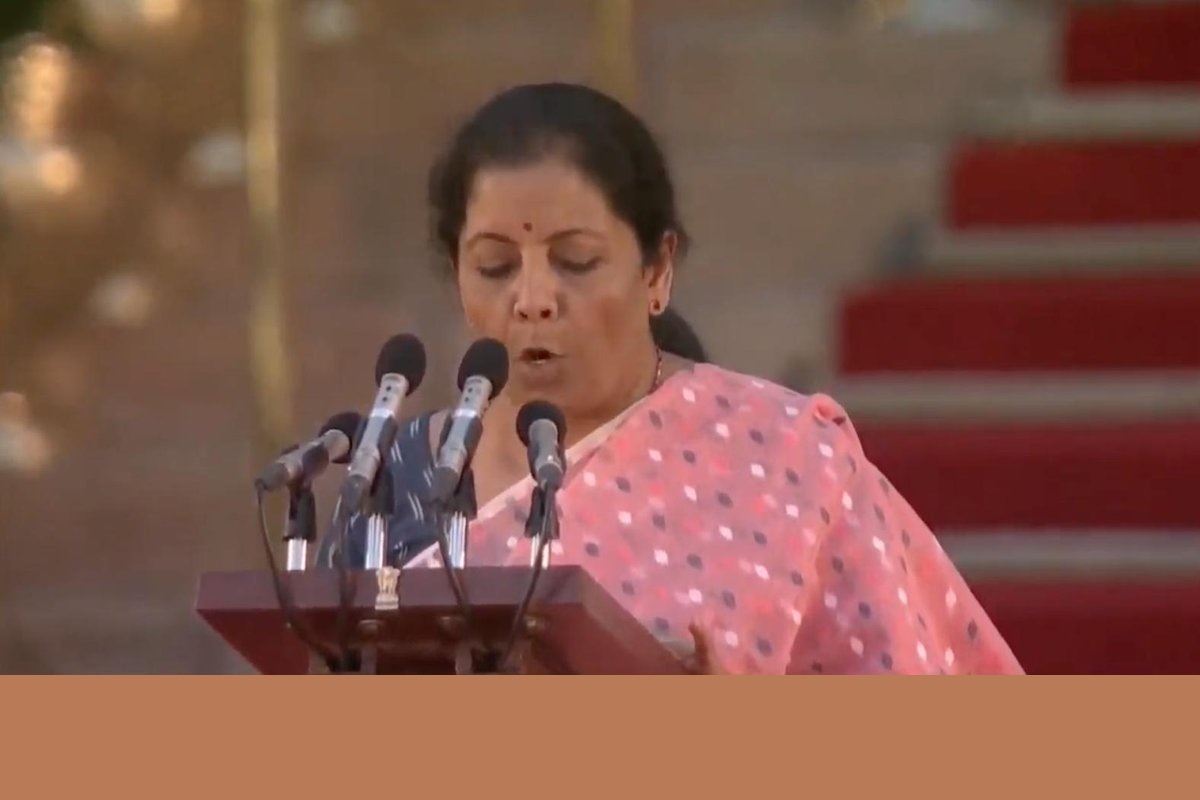Prime Minister Narendra Modi surprised not only Dalal Street but also others by appointing Nirmala Sitharaman as the Finance minister.
He had thrown a similar surprise in 2017 when he appointed her as the Defence minister. Nirmala has really shattered the glass ceiling by reaching where she has. She is the first woman minister to hold these two portfolios after Indira Gandhi.
Advertisement
It shows that Modi has a lot of trust in her. Now she will sit on the high table and will be part of top committees like the Cabinet Committee on Political Affairs, Cabinet Committee on Economic Affairs and Cabinet Committee on Security, as the only woman representative in these committees.
This mega elevation is a calculated risk, which the Prime Minister is willing to take. Nirmala Sitharaman’s appointment raised eyebrows in financial circles as many believed that Modi would give Finance to his party chief Amit Shah or Railway minister Piyush Goyal, who had held the portfolio briefly when then Finance Minister Arun Jaitley was ailing early this year.
It was Goyal who presented the interim budget this year. Some say that her integrity and being far away from business lobbies might have got her the finance ministry job. So why Sitharaman? Perhaps Modi wanted to send a message that performance will be rewarded. He was clearly appreciative of her as defence minister, defending him on the Rafael deal in parliament and outside.
She keeps a low profile and does not speak out of turn. Mod does not like flamboyant ministers. When she was made the Defence minister in 2017 she said, “Somebody who has come from a small town, grown in the party with all the support of the leadership… and if given such a responsibility, it just makes you feel sometimes that cosmic grace is there. Otherwise, it is impossible.”
The cosmic grace has taken her further. Sitharaman had a quick rise in her political career. With a Master’s degree in Economics and a doctorate in Indo European Textile trade, she had a stint in Price Waterhouse Coopers. She joined the BJP in 2008 and became a national spokesperson later. She came in close contact with Modi during the 2012 Gujarat elections when she went to Ahmadabad to help him in the polls.
She impressed him then and when he became the prime minister he rewarded her by appointing her as a junior minister in the finance ministry. Then she went on to become the Commerce minister and later the defence Minister and now the Finance minister. Prime Minister Modi has hand picked Sitharaman as the person to chalk out the next dose of economic reforms in his second term.
Will she be able to handle the Finance Ministry and produce results?
Unfortunately, she has taken over at a time when the economy is not in the best of health. Jobs and economy were the two important poll issues raised by the opposition in the 2019 campaign. On May 31, the government announced that India’s Gross Domestic Product expanded 5.8 per cent in the first three months of the year, down from 6.6 per cent in the final quarter of 2018.
The expected growth was around 6.3 per cent. Secondly the unemployment is at its lowest in 45 years. Job creation is important, as 8.1 million jobs are required every year. The fact that the global economy is also slowing down makes her job more difficult. Sitharaman’s first acid test will come when she presents the full budget on July 5. The budget is going to be very crucial as there is need for huge stimulus.
The government has to find money for the welfare schemes the cabinet announced at its first meeting on Friday. Moreover, there is expectation within India and abroad that the pace of reforms might be quickened in Modi’s second term as many were disappointed about the pace of reforms in his first term. If India is to get more foreign investment, the ease of doing business must be improved further. Getting more private investment and increasing exports are also needed.
The key unfinished reforms include: financial sector reforms – establishing a bankruptcy resolution regime for financial firms, and improving consumer protection in finance. Disinvestment has been talked about for a long time with no action. The market value of the government’s stock holdings in more than 80 listed PSUs is reportedly over Rs 18 lakh crore. Demonetisation and GST were two important initiatives of the Modi government which came in for criticism.
Simplification of GST is needed. Fiscal consolidation and improving efficiency in the government’s expenditure are also important. Bold reforms are also required in banking, direct tax laws and administration and budgeting process. Sitharaman’s job is cut out for her and how far she succeeds depends on many factors.











